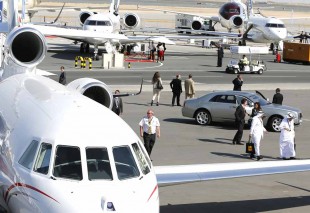

Regional airlines set to soar in next decade

The next 10 years will see the aviation industry explode in the MENA region according to a new Ernst & Young industry report.
“An industry with a history of resilience, the growth of the aviation business is directly linked to that of global GDP and emerging markets are the ones driving economic growth and fuelling air traffic development.
“The industry has grown by 53% since 2000 and will continue to grow airline traffic at 5% Revenue Passenger Kilometre (RPK) until 2023,” said author Sunil Malhotra, director aviation sector, Middle East & North Africa for Ernst & Young.
The report noted that Asia-Pacific will lead world traffic by 2031, with a 32% share, with global airline passenger numbers projected to grow at 4% per annum (based on ICAO forecasts), and Middle East carriers to see market share rise to 11% in 2031 from the current figure of 7%.
Year-on-year RPK growth by Middle East-based carriers is also being factored into the equation, rising from 11.4% to 15.6%, driven by long-range aircraft capability and the region’s newly developed airport hubs.
“Translating this into financial results, in the near term we will see a moderate improvement in net profits, however, looking longer term, the rising middle class in Asia-Pacific and the Middle East offers a large pool of opportunity in emerging markets, complemented by higher economic growth,” remarked Malhotra, with Ernst & Young noting that this sector will grow from 1.8 billion to 4.9 billion by 2030, creating US $56 trillion in consumer spending.
“While the opportunities are clearly there, airlines must remain focused on innovation in order to maintain a competitive edge, with four key areas of focus to develop including customer insight, a realistic understanding and appreciation of people and culture, investment into comprehensive R&D, and operations and business model alignment,” he added.